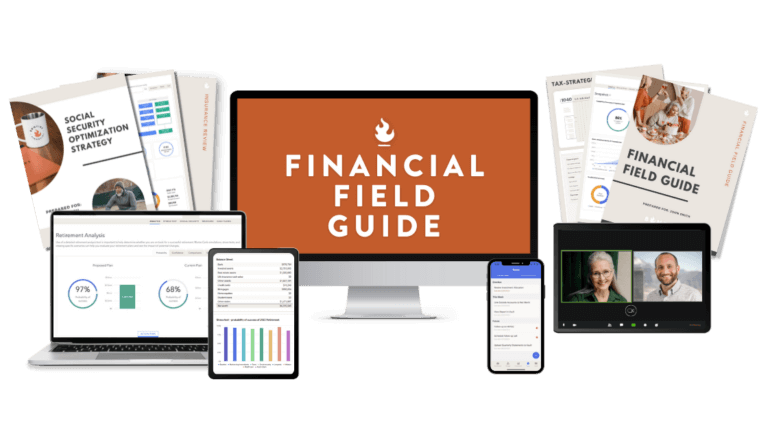For many professionals, business owners, and high earners, saving for retirement isn’t about lack of discipline. You already have strong income and cash flow. You may be consistently maxing out your 401(k), setting aside money in brokerage accounts, and even investing in real estate or other alternatives.
But here’s the problem: the standard retirement tools have strict contribution limits. A 401(k) may feel like a strong option, but even when you max it out, adding in profit-sharing and catch-up contributions, you’ll likely cap out under $80,000 a year. That’s a good number, but not enough to truly accelerate your savings if you want to catch up late or shelter more income from taxes.
Enter the Cash Balance Plan.
Read on, and listen in to this episode, to learn how it works, why it’s so powerful, and whether it could be the right move for your retirement strategy.
Listen Now: iTunes | Spotify | iHeartRadio | Amazon Music
What Is a Cash Balance Plan?
A Cash Balance Plan is a type of hybrid defined benefit plan. That phrase may sound complicated, but here’s the essence: it’s a retirement plan that blends elements of a traditional pension with the flexibility of a 401(k).
Unlike the pensions of decades past, where companies like Ford or GM promised lifetime income for employees, a Cash Balance Plan is defined by the annual contributions you (or your company) make. Those contributions grow tax-deferred, and when you retire, you can roll the balance into an IRA or take it as an annuity.
Think of it as an advanced retirement savings tool for people who want to put away much more than a 401(k) allows.
Why High Earners and Business Owners Should Pay Attention
Here’s where Cash Balance Plans shine: contribution limits are much higher than 401(k)s. Depending on your age, income, and plan design, you could contribute $100,000 to $300,000 or more per year.
For a business owner with strong cash flow, that means:
-
Massive tax savings. Every dollar you put into the plan reduces your taxable income.
-
Accelerated retirement savings. If you’re starting late or want to ensure you maintain your lifestyle, this lets you catch up quickly.
-
Strategic employee benefits. You can structure the plan to benefit your team as well, while still prioritizing your retirement goals.
In other words, if you’ve ever looked at your 401(k) max and thought, “That’s just not enough,” a Cash Balance Plan may be exactly what you need.
Comparing 401(k)s and Cash Balance Plans
Most people are familiar with 401(k) rules, so let’s put the two side by side:
-
401(k) contributions (2025 limits – SEE CURRENT LIMITS HERE):
-
$23,000 under age 50
-
$31,000 age 50+ with catch-up
-
$34,750 with SECURE 2.0 special catch-up (ages 60–63)
-
Even with employer contributions and profit sharing, totals usually cap under $76,500–$90,000.
-
-
Cash Balance Plan contributions:
-
Vary by age and plan design
-
Often allow $100,000–$300,000+ annually
-
Maximum lifetime accumulation of around $3.5 million
-
The difference is striking. With a 401(k), you’re building steadily. With a Cash Balance Plan, you’re pouring fuel on the fire.
How Contributions Work
Cash Balance Plans are age-sensitive. The older you are, the more you can contribute. That’s because the actuarial tables assume you have fewer years until retirement, so the annual contribution needed to reach your benefit goal is higher.
For example:
-
A 45-year-old business owner might be able to contribute $100,000 annually.
-
A 55-year-old might be eligible to contribute $250,000 annually.
This makes them especially powerful for late savers, people who may have built their business first and are now catching up on retirement.
The Concrete Analogy
One way to think about Cash Balance Plans is like pouring concrete. Before the pour, you can shape the mold any way you like: round, square, detailed, or simple. There’s flexibility in the design.
But once the concrete sets, it’s fixed. A Cash Balance Plan is similar: during design, you have flexibility to customize contributions, employer matches, and employee benefits. But once the plan is established, you’re expected to stick with it for at least three to five years.
This ensures the plan is legitimate and not just a tax dodge.
Investment Considerations
Here’s where Cash Balance Plans differ from 401(k)s:
-
401(k): Typically invested in a mix of stocks, bonds, and funds. Growth can vary widely year to year.
-
Cash Balance Plan: Generally invested more conservatively, targeting 3–5% returns.
Why the difference? Because each year, the plan must meet actuarial requirements. If your investments outperform too much, your ability to contribute in future years may actually shrink. Conservative investments keep things predictable and maximize the amount you can put in over time.
Think of your 401(k) as your “growth” bucket, while your Cash Balance Plan is your “storage” bucket, a place to consistently pack away large sums without volatility getting in the way.
Tax Efficiency in Action
Imagine a 55-year-old business owner earning $500,000 a year. Without advanced planning, they might pay well into six figures in taxes annually.
With a Cash Balance Plan, they could:
-
Contribute $250,000 to the plan.
-
Reduce their taxable income significantly.
-
Invest contributions conservatively until retirement.
-
Roll the plan balance into an IRA at retirement, unlocking full investment flexibility.
Instead of writing a massive check to the IRS, they’re writing it to their own retirement future.
What About Employees?
If you own a business with employees, you’ll need to include them in the plan. That might sound daunting, but the math often works in your favor.
For example:
-
You contribute $200,000 for yourself.
-
You contribute $5,000 spread across several employees.
Your employees gain a great benefit, but your retirement nest egg still gets the bulk of the funding. For partnerships, law firms, medical practices, etc. Cash Balance Plans can be structured to benefit multiple partners significantly while still meeting employee requirements.
The Pros and Cons of a Cash Balance Plan
Like any tool, a Cash Balance Plan isn’t perfect for everyone, there are pros and cons.
Pros:
-
Huge contribution limits (up to $300K+ annually).
-
Significant tax savings.
-
Ideal for late savers or high earners.
-
Customizable design.
-
Can be paired with a 401(k) for maximum savings.
Cons:
-
Requires consistent contributions (3–5 years recommended).
-
More complex administration and actuarial requirements.
-
Investments are more conservative.
-
Costs include plan setup, annual filings, and contributions for employees.
Who Should Consider a Cash Balance Plan?
A Cash Balance Plan might be right for you if:
-
You own a business or are a partner in a firm.
-
You have a strong, predictable cash flow.
-
You’re already maxing out your 401(k) and other savings.
-
You want to significantly reduce taxable income.
-
You’re in your 40s, 50s, or 60s and want to catch up fast.
It may not be right if:
-
Your income or cash flow is inconsistent.
-
You’re not ready to commit to multi-year contributions.
-
You prefer aggressive investment strategies within the plan itself.
Real-World Examples
-
The Late Saver Business Owner
A 52-year-old physician realizes they’ve only saved $800,000 for retirement. With a Cash Balance Plan, they can contribute $200,000 annually for the next 10 years, building a $3 million nest egg while slashing annual taxes. -
The Law Firm Partners
Four partners in their late 40s set up a Cash Balance Plan alongside their 401(k). Each is able to contribute $150,000 annually, while still offering employees a fair benefit. Over 15 years, they each build multi-million-dollar retirement accounts. -
The Solo Entrepreneur
A 55-year-old business consultant with no employees sets up a plan to contribute $250,000 annually. After 7 years, they’ve set aside $1.75 million tax-deferred, all while lowering taxable income during peak earning years.
Flexibility at Retirement
When you retire, your Cash Balance Plan balance doesn’t just sit there. You have choices:
-
Roll it into an IRA and invest however you choose.
-
Convert it into an annuity for guaranteed income.
This flexibility makes it a powerful complement to other retirement accounts.
Bottom Line
If you’re a high earner, small business owner, or professional with strong cash flow, a Cash Balance Plan may be one of the most effective ways to maximize savings and minimize taxes.
It’s not right for everyone, but for the right person, it can mean the difference between just scraping by in retirement and maintaining the lifestyle you’ve worked hard to build.
At Bonfire Financial, we help design and implement Cash Balance Plans tailored to your business, income, and retirement goals. We’ll walk you through the calculations, structure, and long-term strategy so you know exactly what’s possible.
Next Steps
If you’d like to explore whether a Cash Balance Plan could work for you:
👉 Schedule a call with us today
Together, we’ll run the numbers and design a strategy that helps you save smarter, reduce taxes, and secure the retirement you deserve.
 Client Login
Client Login







